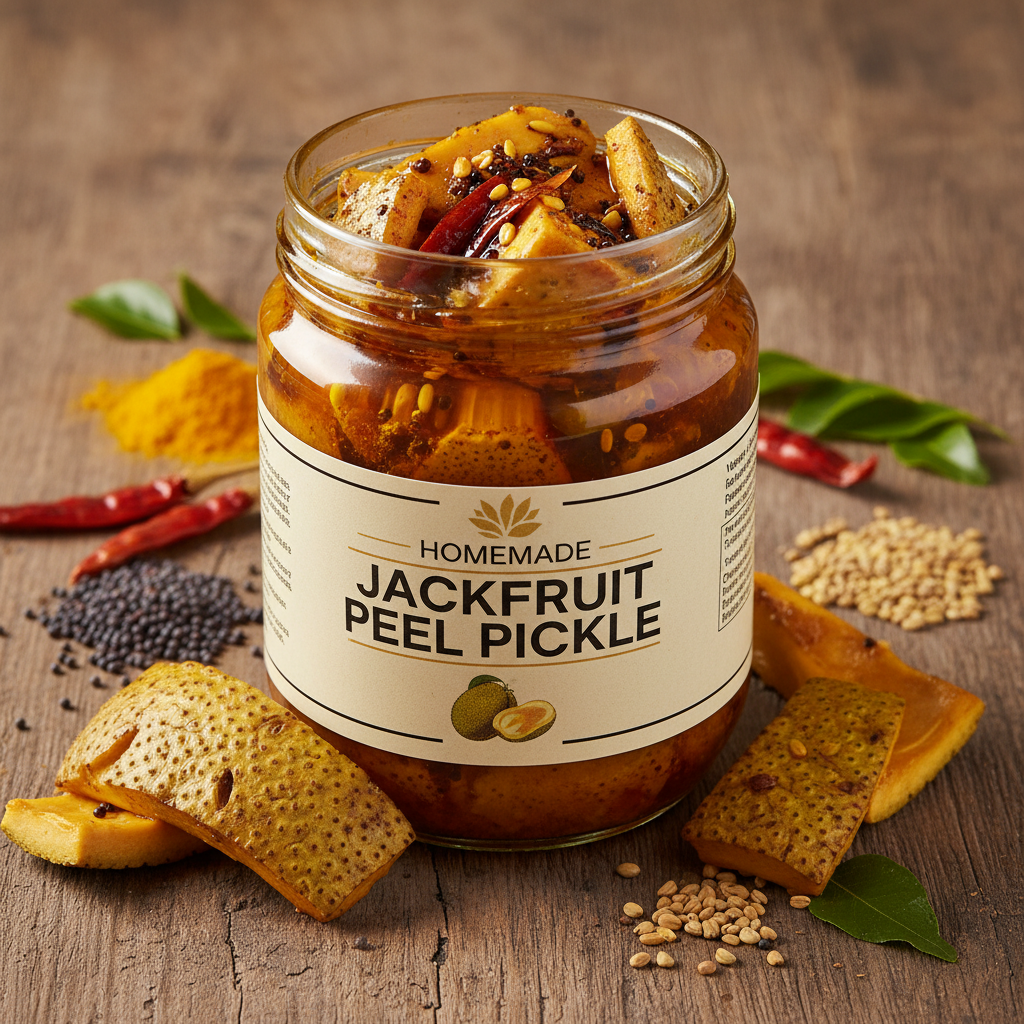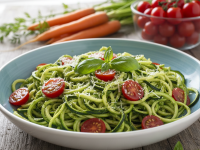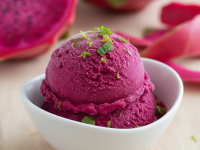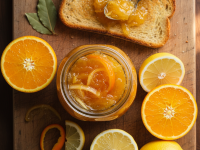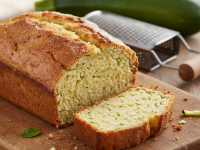Hey there, fellow food adventurers! Let’s talk about jackfruit for a moment. Most of us go gaga over its sweet, fragrant flesh when ripe, or its meaty texture in savory curries when unripe. But what about the massive, spiky, often intimidating peel? More often thaot, it ends up in the bin, destined for the landfill. And for years, I was guilty of this too.
That is, until my grandmother, bless her resourceful heart, showed me a culinary revelation that completely changed my perspective. She looked at those discarded peels not as waste, but as a treasure trove of flavor waiting to be unleashed. And what she created was nothing short of magical: a zesty, spicy, incredibly addictive jackfruit peel pickle. It’s a recipe that embodies zero-waste cooking long before it became a trend, a testament to her wisdom and the delicious possibilities hidden in plain sight.
Today, I’m absolutely thrilled to share this incredible recipe with you. It’s more than just a recipe; it’s a story, a tradition, and a delicious way to honor every part of this magnificent fruit. Get ready to turn something you’d normally discard into your new favorite condiment!
My Journey with Jackfruit Peels: From Waste to Wonder
Growing up in a home where every part of an ingredient was cherished, the sheer volume of jackfruit peels after a family feast always felt like a minor tragedy. We’d enjoy the sweet fruit or a hearty curry, and then a mountain of tough, sticky peels would remain. My grandma, however, saw opportunity where I saw waste. I remember her sitting patiently, hands oiled, expertly slicing away the green, thorny exterior to reveal the fibrous, white pith beneath.
My initial skepticism was palpable. “Pickle that, Grandma?” I’d ask, watching her boil the chunks of peel until they softened. But the aroma that filled her kitchen as she sautéed a medley of spices – mustard seeds popping, fenugreek scenting the air, chili powder blushing in hot oil – was undeniably enticing. The first time I tasted her jackfruit peel pickle, I was floored. It was tangy, spicy, slightly sweet, with a wonderfully chewy texture that held its own against the robust spices. It wasn’t just good; it was revolutionary. It felt like eating a piece of history, a tradition of thrift and flavor that tasted utterly modern.
Since then, making this pickle has become a cherished ritual. It’s a way to coect with my roots, practice sustainable cooking, and, let’s be honest, indulge in a truly unique and delicious condiment that never fails to impress. It’s packed with fiber, and when made correctly, can last for months, becoming even more flavorful with time.
Understanding the Star Ingredient: Jackfruit Peels
Before we dive into the actual cooking, let’s talk about the main star: the jackfruit peel. Not all parts of the peel are created equal for pickling. We’re interested in the thick, fleshy, white part that lies between the outer green, spiky skin and the ier fibrous core (which holds the fruit bulbs).
Preparing Your Jackfruit Peels: The Essential First Steps
- Safety First: Jackfruit latex is notoriously sticky. Before you start, generously oil your hands and the knife you’ll be using. This prevents the latex from sticking.
- Decortication: Carefully slice off the tough, green, spiky outer layer of the jackfruit. You can do this by quartering the jackfruit first, then working on each quarter.
- Separation: Once the green skin is off, you’ll see the thick white flesh. Cut this into smaller, manageable chunks (about 1-2 inches). Make sure to remove any remaining stringy bits from the inside.
- Pre-Cooking is Key: The raw jackfruit peel is very fibrous and tough. It needs to be tenderized before pickling. You can either boil or steam it.
- Boiling Method: Place the cut peels in a large pot, cover with water, and add a pinch of salt. Bring to a boil, then simmer until the peels are fork-tender but still retain some bite – usually 15-20 minutes. Drain thoroughly.
- Steaming Method: Arrange the peels in a steamer basket over boiling water. Steam for 20-25 minutes, or until tender. This method retains more nutrients and flavor.
- Drying: This step is CRUCIAL for a long-lasting pickle. After boiling or steaming, spread the cooked peels on a clean cloth or baking sheet and let them air dry for several hours, or even overnight, until there’s absolutely no moisture left. You can also pat them very dry with paper towels. Any residual water can lead to spoilage.
Gathering Your Flavor Arsenal: The Ingredients
The beauty of this pickle lies in its balance of heat, tang, and aromatic spices. Here’s what you’ll need to create this culinary masterpiece. Feel free to adjust the spice levels to your preference!
Ingredients List:
- 500g (approx. 1 lb) prepared and dried jackfruit peels (from a medium-sized jackfruit)
- 1 cup mustard oil (or any neutral oil with a high smoke point)
- 1 tablespoon mustard seeds (black or brown)
- 1 teaspoon fenugreek seeds
- 1/2 teaspoon asafoetida (hing)
- 1 tablespoon turmeric powder
- 2-3 tablespoons red chili powder (adjust to your spice preference)
- 1 tablespoon coriander powder (optional, but adds depth)
- 1 teaspoon black cumin seeds (kalonji) (optional)
- 1/2 cup white vinegar or lemon juice (for tang and preservation)
- 2-3 tablespoons salt (or to taste)
- Fresh curry leaves (a sprig or two, optional but highly recommended)
The Heart of the Matter: Step-by-Step Jackfruit Peel Pickle Recipe
Now, let’s get down to the exciting part – bringing all these wonderful ingredients together to create your delicious jackfruit peel pickle!
- Heat the Oil: In a large, heavy-bottomed pan or pot, heat the mustard oil over medium-high heat until it just begins to smoke lightly. This “tempers” the mustard oil, reducing its pungent raw smell. If using a neutral oil, simply heat until shimmering. Turn off the heat and let it cool slightly for a minute.
- Bloom the Spices: Reduce the heat to low. Add the mustard seeds and fenugreek seeds to the warm oil. Let them splutter and release their aroma for about 30 seconds.
- Add Aromatics: Immediately add the asafoetida and fresh curry leaves (if using). Stir quickly for 10-15 seconds until fragrant. Be careful not to burn them.
- Introduce Dry Spices: Turn off the heat completely. Add the turmeric powder, red chili powder, coriander powder, and black cumin seeds (if using). Stir well to combine all the spices with the oil. The residual heat from the oil will lightly toast the spices, releasing their flavors without burning them.
- Combine with Jackfruit Peels: Add the dried, pre-cooked jackfruit peels to the pan. Mix thoroughly, ensuring that every piece of jackfruit peel is well coated with the aromatic spice-infused oil.
- Add Salt and Tang: Stir in the salt and then pour in the vinegar or lemon juice. Mix everything together really well. The vinegar/lemon juice acts as a preservative and adds the essential tangy flavor to the pickle.
- Cool Down: Let the pickle cool down completely in the pan. This step is important before jarring.
- Jar It Up: Once completely cool, transfer the jackfruit peel pickle into sterilized, airtight glass jars. Ensure there’s a layer of oil floating on top; this acts as a natural seal and prevents spoilage. If there isn’t enough, gently heat some more mustard oil, let it cool completely, and pour it over the pickle until the top layer is covered.
Tips for Pickle Perfection & Longevity
Making a great pickle isn’t just about following the steps; it’s about understanding the nuances that ensure it’s both delicious and long-lasting.
- Sterilization is Key: Always use clean, sterilized glass jars. Wash them thoroughly with hot, soapy water, rinse well, and then either boil them for 10 minutes or bake them in a low oven (100°C / 200°F) for 15-20 minutes until completely dry. This prevents mold and bacterial growth.
- No Moisture: I caot stress this enough: ANY water, even a tiny drop, can ruin your pickle. Ensure your jackfruit peels are bone dry, your stirring spoons are dry, and your jars are dry.
- The Oil Layer: The layer of oil on top of the pickle is your best friend. It creates an anaerobic environment, preventing air-borne bacteria and mold from getting to your pickle. Always ensure the pickle is submerged in oil.
- Storage: Store your pickle in a cool, dark place. A kitchen pantry or cupboard away from direct sunlight is ideal. Avoid refrigeration unless you live in a very humid climate or prefer it chilled.
- Patience, My Friend: While tempting to dig in right away, pickles develop their best flavors over time. Let it sit for at least 3-5 days, or even a week, before enjoying. The flavors will meld and deepen beautifully.
- Serving Suggestions: This jackfruit peel pickle is incredibly versatile! It pairs wonderfully with plain rice and dal, alongside Indian flatbreads like roti or paratha, or even as a zesty side with any curry. I sometimes even sneak a spoonful into my sandwiches for an extra kick!
- Troubleshooting:
- Too Spicy? You can dilute it slightly by adding more oil or a bit of plain, boiled jackfruit peel (if you have extra, prepared without spices).
- Not Tangy Enough? Add a little more vinegar or lemon juice, mix well, and let it sit for a day.
- Mold? If you see any signs of mold, unfortunately, the whole batch needs to be discarded. This is why dryness and oil are so important!
A Deliciously Sustainable Conclusion
And there you have it – a recipe that transforms what was once considered waste into a vibrant, flavorful, and incredibly satisfying condiment. This jackfruit peel pickle is more than just a culinary item; it’s a testament to resourcefulness, tradition, and the hidden potential in everyday ingredients.
Making this pickle fills me with a sense of accomplishment and a quiet joy, knowing I’m carrying forward a delicious piece of my grandmother’s legacy. It’s a fantastic way to contribute to a zero-waste kitchen and surprise your taste buds with something truly unique. So, the next time you get your hands on a jackfruit, please don’t throw away those peels! Give this recipe a try. I promise, your taste buds (and your eco-conscious heart) will thank you.
Happy pickling!
